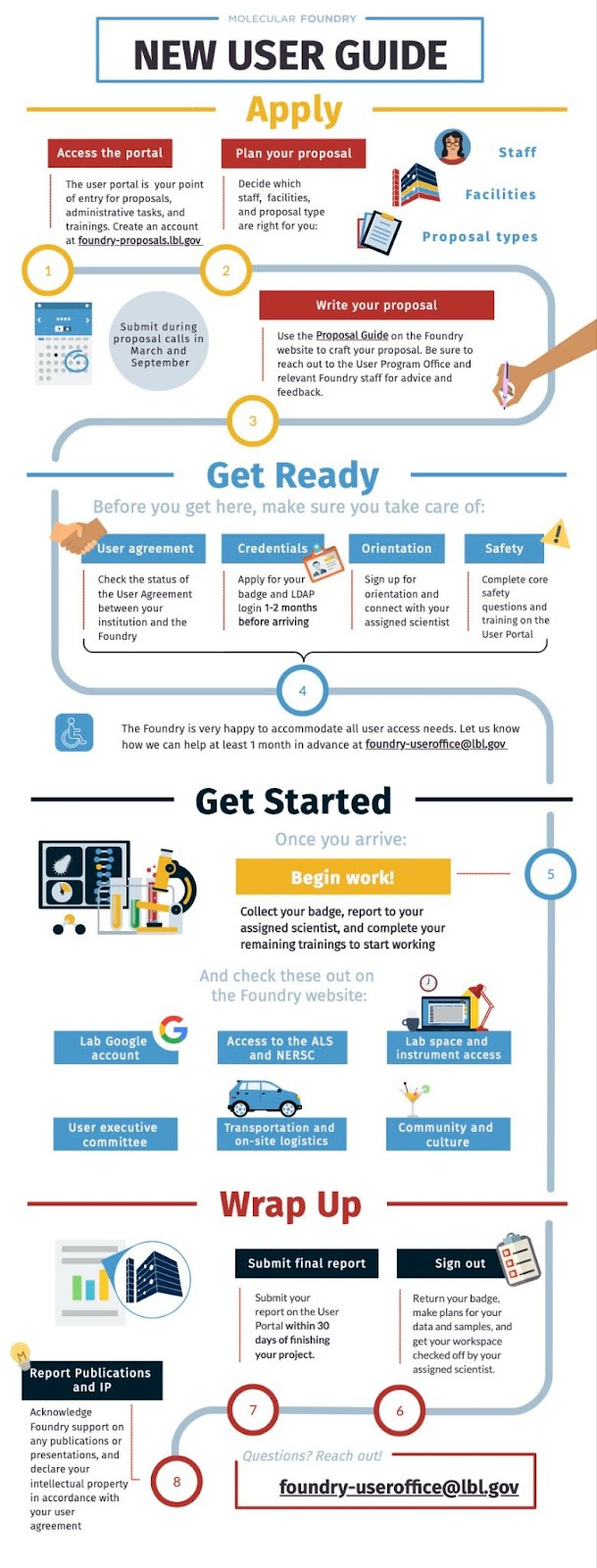Improve Access to Your User Facility
If you want to democratize science, give scientists outside of top institutions free time on the world’s best equipment.
If you’re a scientist who has spent time at a large enough organization, you’re probably familiar with user facilities. You may even have helped maintain one. In order to hear about these incredibly useful and heavily subsidized facilities, you need to be in the know. That means that they are essentially reserved for classically trained scientists at established institutions. We’ve talked about the problems with privileging an in-group before, and this is another great example.
Some user facilities are trying to change. The Molecular Foundry at Lawrence Berkeley National Lab has an intro video that begins
The Molecular Foundry at Lawrence Berkeley National Laboratory exists to address a problem: that scientific resources are concentrated among a select few, but good ideas aren’t. The foundry helps democratize science by giving anyone with a good idea access to world-class tools for working at the smallest scales, down to individual atoms and molecules.
We’re genuinely moved by this. They seem to be walking the walk as much as they can within US Department of Energy regulations. They operate their own youtube channel with decent production values and frequent updates and have published promotional papers in top journals.
They also created this surprisingly helpful user guide to the daunting bureaucracy one must navigate to work with them.

This infographic highlights a second issue: not only is it hard to hear about these facilities, it’s hard to navigate the bureaucracy needed to access them even if you do know about them. This further privileges scientists with institutional resources to guide them.
If you want to democratize science, making sure that scientists outside of top institutions can have cheap/free time on the world’s best equipment is a great way to start. Creating this opportunity requires solving both the awareness and access bottlenecks. We believe that individuals working at the facilities can have a big impact even if acting alone.
Increasing awareness will require new approaches. The Molecular Foundry’s promotion is not working. As of September 2025 their youtube channel has about 100 subscribers and the promotional paper in Nature Materials has been accessed less than 1000 times in more than two years. Facility social media policies are usually reasonably permissive to individuals posting their personal opinions on personal accounts (Berkeley Lab’s certainly is) which gives a lot of leeway for non-traditional promotion by individuals.
It’s also common for an individual facility to have its own social media accounts managed part time by a facility staff member. That individual could decide to buy digital ads. As far as we know, this has never been tried at any scale for a user facility even though It works for most other products and services. To justify funding there are plenty of potential KPIs that could measure the effectiveness of advertising. For example: number and quality of proposals to their review process, number and quality of publications from accepted projects and the number of distinct institutions with accepted proposals. Relevant keywords are likely to be cheap too since there are not many competing bids for phrases like “molecular beam epitaxy.”
Reducing the burden of bureaucracy takes a different kind of creativity, but is within the power of an individual researcher. If you work at or around one of these facilities you can proactively reach out to new users to include them as collaborators on proposals you expect to sail through the approval process such as projects led by internal staff or prestigious collaborations. You can help organize and guide a batched proposal for a group of outsiders so that they can share the bureaucratic load. You might even be able to arrange an unpaid visiting appointment at your institution for an independent researcher.
There are lots of user facilities all over the world, most of which are below 100% utilization. Have you ever tried improving access to yours? Maybe you should.



I’d like to support this message and broaden its applicability to include instruments owned by top institutions, not just those at user facilities.
After the completion of a successful project that enabled a lab to purchase new instrumentation and fund a student’s salary, what happens to the instrument afterward?
Top institutions often benefit from a “virtuous” (or is it?) cycle: producing more science, leading to more publications, and therefore higher chances of securing additional funding. This, in turn, expands their arsenal of cutting-edge instruments. It’s not uncommon for each new project or proposal to involve the acquisition of yet another instrument, while the “old” one ends up sitting in a corner gathering dust.
What if scientists from other institutions were allowed to borrow or rent these instruments?
Just wanted to flag one difficulty I have observed with independent researchers accessing user facilities - they usually request that the user has accident and liability insurance. This is understandable from the facility manager's perspective, and it is basically taken for granted that appropriate insurance coverage will be provided by an academic's employer, but this is difficult to arrange for truly independent researchers, as it seems difficult to take out these sorts of policies as an individual.
Even affiliation with an independent scholarship institution (like Ronin or IGDORE) doesn't provide a good fix, as the insurance usually only covers employees, while most affiliated researchers at these institutions aren't employed. Treating affiliates as volunteers and getting volunteer insurance might offer more options, but by then it's starting to get complicated...
Aside - I expect that almost all of the points in the post (and about insurance) would also apply to work at field stations/sites.